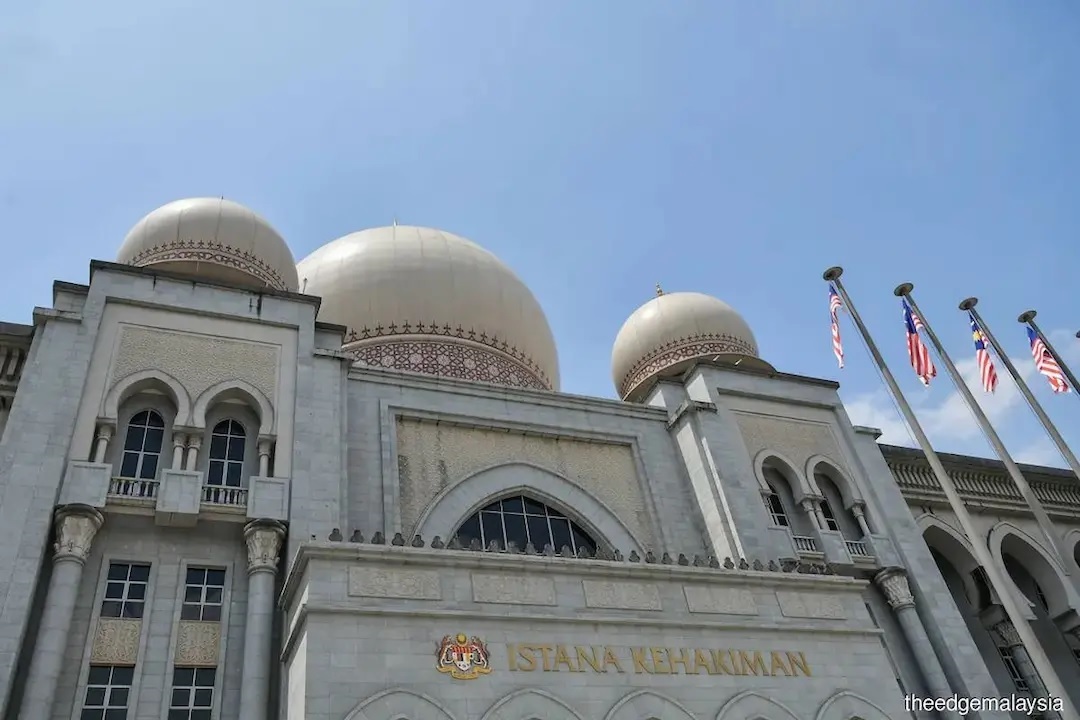
- In his 66-page ruling released Tuesday (July 22), Justice Datuk Lee Swee Seng stated the decision favoring the government was straightforward, citing the broader need to shield public entities from litigation that could impede governance.
PUTRAJAYA (July 24): The Court of Appeal (COA) has upheld the broader principle of administrative law applied to protect public entities, particularly when they risk disrupting public administration and governmental functions, a judge who allowed the Government’s appeal in the Semantan case, said.
In allowing the government’s appeal in Semantan Estate (1952) Sdn Bhd vs Government of Malaysia, Justice Datuk Lee Swee Seng emphasized that administrative law safeguards state functions from certain claims.
In his 66-page ruling released Tuesday (July 22), Lee stated the decision favoring the government was straightforward, citing the broader need to shield public entities from litigation that could impede governance. The judgment underscores the limits of judicial recourse when challenging state actions deemed essential to public interest.
He warned of the "horrendous" consequences if, as in the Semantan Estate case, an order was issued to return the land to the company after nearly 70 years.
“What was on the subject land before in December 1956 when the Government took possession of it...were just old rubber trees.
"Now it is part of a fully-developed township where there are various government buildings housing various facilities that serve the public including the Syariah Courts, the Immigration Department, a mosque, a hockey stadium and a national archive, to mention but a few.
“There is also a system of roads, highways and flyovers serving the public and connecting it with the surrounding areas, all developed and continue to be developed,” Lee said.
The top judge reasoned an order for recovery and transfer of the land would not just result in the transfer of ownership of the buildings and infrastructure on the subject land to Semantan Estate.
“Semantan Estate as part of the incidents of proprietorship would be able to prevent the public from entering the subject land and the buildings therein and even using the roads. There is also nothing preventing them from fencing off the whole area and charging a licence fee or a toll for anyone who wants to pass through it,” he added.
“(For this reason), we agree with the Government’s submission that there is a limit to the legal recourse available against the Government whereas in this case, the delivery of land is concerned,” Lee said in his written grounds, in unanimously allowing the Government’s appeal not to register the land to Semantan Estate as was decided by the High Court last August.
Lee, now a Federal Court judge since May, added that the appellate court could see where Semantan Estate was coming from if it was allowed by law to have the land transferred back to them.
“The Government may then acquire the subject land the next day but it would be at the current market value. It does not matter if it is the Government itself that has (utilised) tons of money to develop the subject land to what it is today.
“The stand of Semantan Estate is that even if the Government would have to pay through its nose, it is the price it has to pay as the court has declared the acquisition to be unlawful. The relief prayed for by Semantan Estate in the High Court 2003 declaration suit was clearly abiding by what was precluded as well as permitted under Section 29(1)(b) Government Proceedings Act 1956 (GPA).
Restrained from recovering/transfer of land
The prayers (declarations), the judge said, had stopped short of an order to recover the land, in keeping with the restraint that “the court shall not make an order for the recovery of the land”.
Lee noted that while Semantan Estate’s stand is that while they may be restrained by Section 29(1)(b) GPA 1956, they are not restricted where the ramifications of their declarative prayers are concerned.
The consequences, he added, are the same though their prayers are constricted and confined to a declaration of being entitled to the subject land.
“However, Parliament does not legislate in vain and words are not for decorative purposes when used in a legislation. The words mean what they say that “the court shall not make an order for the recovery of the land”.
“We cannot denude the plain and peremptory words of prohibition into a permission. As there is no court order with respect to the recovery of the subject land, there cannot be correspondingly a subsequent order for a mandamus to compel the recovery of the subject land for there is no positive order for the subject land to be so recovered.
“After all a mandamus may only be ordered to compel a public authority to perform a duty it is legally obligated and not otherwise.”
In the 2003 declaratory suit that was decided in 2009, by the High Court by then Judicial Commissioner Zura Yahya, it was agreed that the Government “had trespassed” on the said land in its acquisition, and that decision was upheld by the Court of Appeal and Federal Court in 2012.
A review by the Government of the apex court decision in 2017, also was futile that led the company to seek a mandamus that it is entitled for the subject land.
Pointless when it has no power to transfer land, compensation the way
It is indeed pointless, Lee said, for the Court of Appeal to make the order (recovery of the land) in question when it has no power to make the order in the nature of the recovery, as it is against the government because Section 29(1)(b) of GPA prohibits against the government.
This, he said, is where the Federal Territory Land Registrar fell into the predicament as the Government’s servant and appellant.
“The order (for the recovery of the land) cannot therefore be allowed to stand,” he said.
Section 29(1)(b) of the GPA states that in any proceedings against the government for the recovery of land or other property, the court shall not make an order for the recovery of the land or the delivery of the property, but may in lieu thereof make an order declaring that the plaintiff is entitled as against the government to the land or property or to the possession thereof.
Citing ‘stare decisis’, a legal principle to follow a past precedent, the judge said the appellate bench has to follow the majority in the Ratnawati case to adopt a sensible approach from realities on the ground at the end of the day of the challenge.
“A sensible approach borne out from realities on the ground that at the end of the day the challenge would revolve around the issue of the adequacy of the compensation sum unless there is mala fide in the land acquisition for a purpose other than a public purpose,” he said.
In the appellate court decision in June, the three-member bench ordered Semantan Estate to be compensated by the government as assessed by the High Court following the illegal acquisition based on the 1956 market rate with 6% annual interest until payment of the sum.
It ordered that parties are given 90 days for the assessment (valuation) and go back to the High Court. The sum of compensation decided by the High Court will have to be deducted by RM1.325 million, which was paid by the government in 1956 to the company.
Semantan Estate appealing to apex court
Incoming Chief Justice Datuk Wan Ahmad Farid Wan Salleh, the third member in that June bench in his supporting judgment had scrutinised Zura’s 2009 judgment and noticed she did not make any order for the impugned land to be transferred to Semantan Estate.
“There is no evidence before this court that Semantan Estate had sought clarification from the learned judicial commissioner as to whether the impugned land ought to be transferred and registered by the Federal Land Commissioner to Semantan Estate as a consequential order.
“In short, there was no attempt made to ‘work out’ the order so as to give effect to the initial order. It is to be recalled that the ‘liberty to apply’ rule for consequential order is implied in every court order. Semantan Estate did not exercise this right at the material time,” he said.
On Tuesday, The Edge reported that Semantan Estate had put in 26 questions of law in seeking leave to appeal before the Federal Court, in what is seen possibly as a final scene for the long-standing almost 70-year-old legal battle.
Among the grounds cited in the appeal is on Article 13 of the Federal Constitution on rights to property where it raised the question that the court had ruled the government had taken the land unlawfully and the landowner is entitled to possession of the land, does Article 13 permit the government to keep the land by the payment of compensation?
Article 13 (2) of the constitution stipulates that no law shall provide for the compulsory acquisition or use of property without adequate compensation and this was applied by the CoA bench that came to the decision in June and is a subject on appeal at the apex court in the coming months.
Besides wanting determination on rights to property, the company also seeks to declare Section 29 (1) (b) GPA as being unconstitutional as it violates Article 13 and that GPA is considered a pre-Merdeka law.
Does Malaysia have what it takes to become a Blue Zone, marked by health and longevity? Download a copy of EdgeProp’s Blueprint for Wellness to check out townships that are paving the path towards that.





